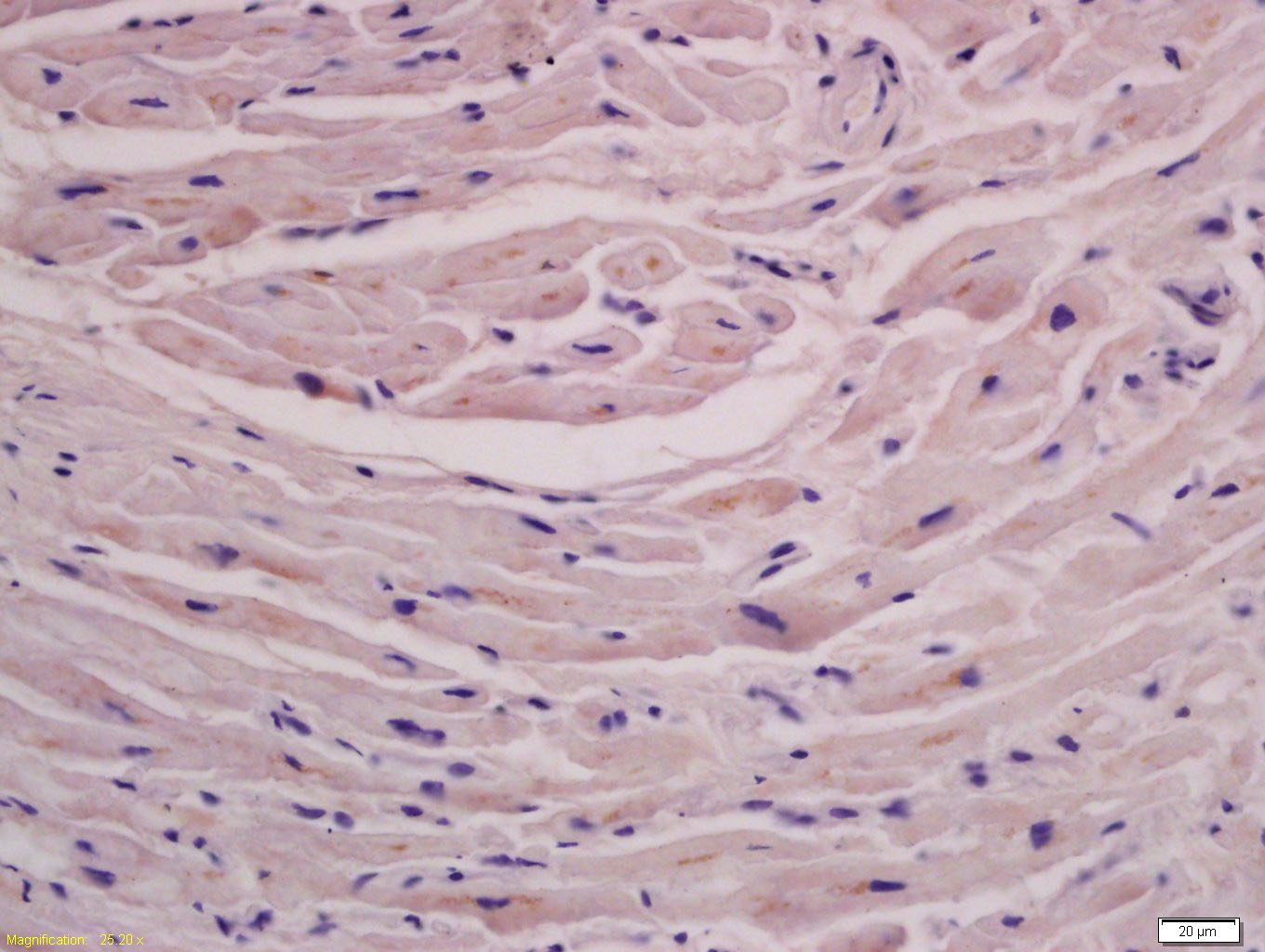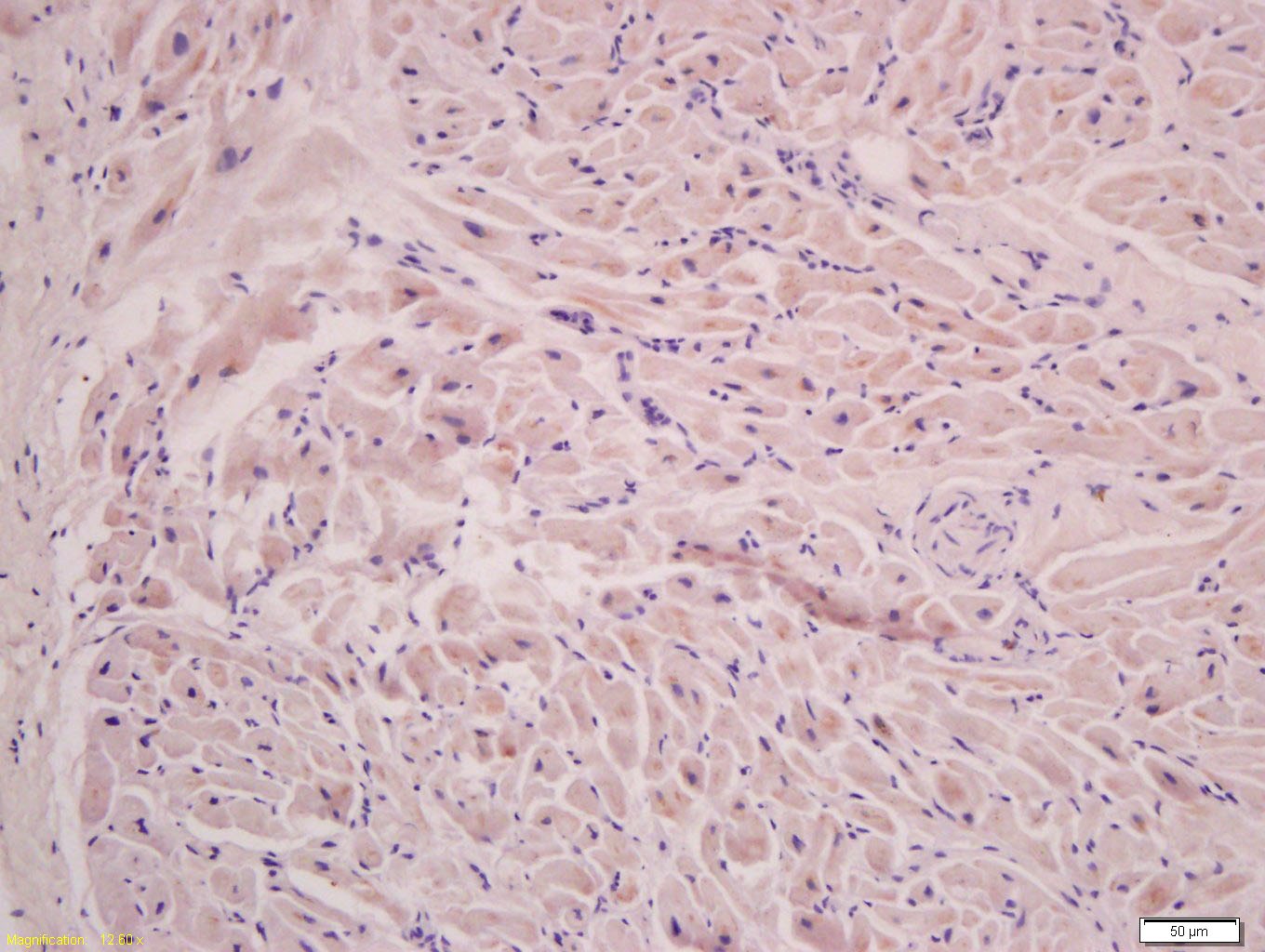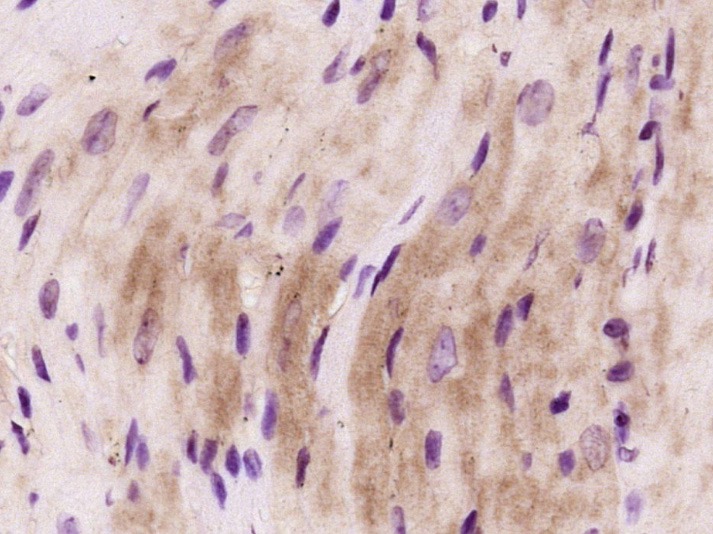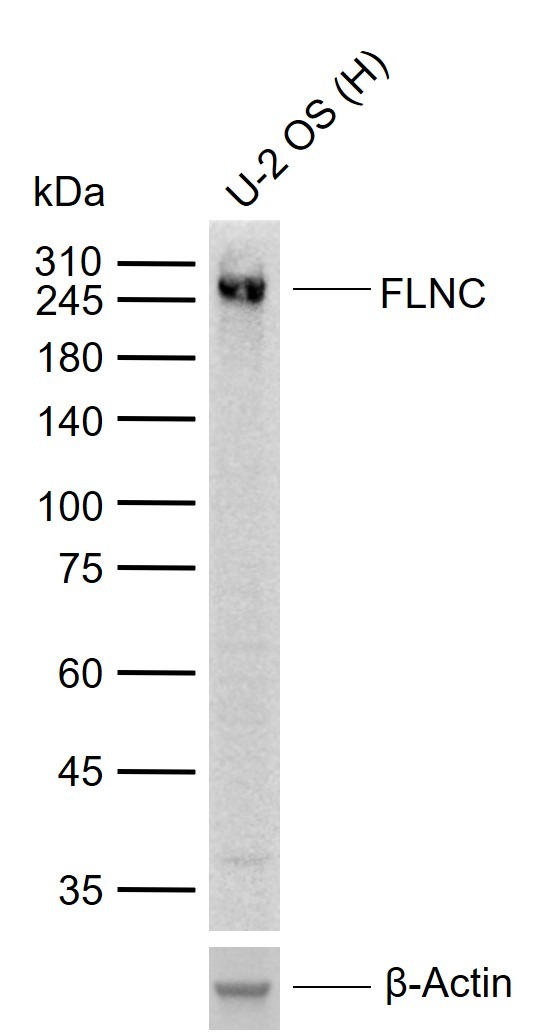Shopping Cart
- Remove All
 Your shopping cart is currently empty
Your shopping cart is currently empty
Anti-FLNC Polyclonal Antibody is a Rabbit antibody targeting FLNC. Anti-FLNC Polyclonal Antibody can be used in IF,IHC-Fr,IHC-P,WB.
| Pack Size | Price | Availability | Quantity |
|---|---|---|---|
| 50 μL | $221 | 7-10 days | |
| 100 μL | $374 | 7-10 days | |
| 200 μL | $527 | 7-10 days |
| Description | Anti-FLNC Polyclonal Antibody is a Rabbit antibody targeting FLNC. Anti-FLNC Polyclonal Antibody can be used in IF,IHC-Fr,IHC-P,WB. |
| Synonyms | Protein FLNc, gamma filamin, gamma actin binding protein, FLN-C, FLNC, FLN2, FLN 2, FLJ10186, Filamin-C, Filamin2, Filamin C gamma, Filamin C, Filamin 2, Actin-binding-like protein, Actin binding protein 280, Actin binding like protein, ABP-L, ABPL, ABP-280-like protein, ABP280, ABP L, ABP 280 |
| Ig Type | IgG |
| Reactivity | Human,Mouse,Rat (predicted:Dog,Pig,Cow,Horse,Sheep,Chimpanzee) |
| Verified Activity | 1. Tissue/cell: rat cardiac muscle; 4% Paraformaldehyde-fixed and paraffin-embedded; Antigen retrieval: citrate buffer (0.01M, pH6.0), Boiling bathing for 15 min; Block endogenous peroxidase by 3% Hydrogen peroxide for 30 min; Blocking buffer (normal goat serum) at 37°C for 20 min; Incubation: Anti-FLNC Polyclonal Antibody, Unconjugated (TMAB-00687) 1:200, overnight at 4°C, followed by conjugation to the secondary antibody and DAb staining. 2. Tissue/cell: rat cardiac muscle; 4% Paraformaldehyde-fixed and paraffin-embedded; Antigen retrieval: citrate buffer (0.01M, pH6.0), Boiling bathing for 15 min; Block endogenous peroxidase by 3% Hydrogen peroxide for 30 min; Blocking buffer (normal goat serum) at 37°C for 20 min; Incubation: Anti-FLNC Polyclonal Antibody, Unconjugated (TMAB-00687) 1:200, overnight at 4°C, followed by conjugation to the secondary antibody and DAb staining. 3. Paraformaldehyde-fixed, paraffin embedded (Mouse heart); Antigen retrieval by boiling in sodium citrate buffer (pH6.0) for 15 min; Block endogenous peroxidase by 3% hydrogen peroxide for 20 min; Blocking buffer (normal goat serum) at 37°C for 30 min; Antibody incubation with (FLNC) Polyclonal Antibody, Unconjugated (TMAB-00687) at 1:400 overnight at 4°C, followed by operating according to SP Kit (Rabbit) instructionsand DAB staining. 4. Sample: Lane 1: Human U-2 OS cell lysates Primary: Anti-FLNC (TMAB-00687) at 1/1000 dilution Secondary: IRDye800CW Goat Anti-Rabbit IgG at 1/20000 dilution Predicted band size: 300 kDa Observed band size: 280 kDa 5. Paraformaldehyde-fixed, paraffin embedded (rat stomach); Antigen retrieval by boiling in sodium citrate buffer (pH6.0) for 15 min; Block endogenous peroxidase by 3% hydrogen peroxide for 20 min; Blocking buffer (normal goat serum) at 37°C for 30 min; Incubation with (FLNC) Polyclonal Antibody, Unconjugated (TMAB-00687) at 1:200 overnight at 4°C, followed by operating according to SP Kit (Rabbit) instructionsand DAB staining.      |
| Application | |
| Recommended Dose | WB: 1:500-2000; IHC-P: 1:100-500; IHC-Fr: 1:100-500; IF: 1:100-500 |
| Antibody Type | Polyclonal |
| Host Species | Rabbit |
| Subcellular Localization | Cytoplasm. Membrane; Peripheral membrane protein. Cytoplasm, cytoskeleton. Cytoplasm, myofibril, sarcomere, Z line. Note=A small amount localizes at membranes. In striated muscle cells, it predominantly localizes in myofibrillar Z lines, while a minor fraction localizes with subsarcolemme. |
| Tissue Specificity | Highly expressed in striated muscles. Weakly expressed in thyroid, fetal brain, fetal lung, retina, spinal cord and bone marrow. Not expressed in testis, pancreas, adrenal gland, placenta, liver and kidney. |
| Construction | Polyclonal Antibody |
| Purification | Protein A purified |
| Appearance | Liquid |
| Formulation | 0.01M TBS (pH7.4) with 1% BSA, 0.02% Proclin300 and 50% Glycerol. |
| Concentration | 1 mg/mL |
| Research Background | Filamins are Actin-binding proteins which contain an N-terminal Actin-binding domain, a membrane glycoprotein domain and a C-terminal self-association domain. Filamins help reshape the cytoskeleton by forming flexible cross-links between two Actin filaments, which maintain membrane integrity during force application. Filamins also participate in signal transduction pathways associated with cell motility, adhesion, differentiation and survival, and force transduction. The filamin family is comprised of Filamin 1, Filamin 2 and Filamin 3. Filamin 2, also designated Filamin C, is a skeletal- and cardiac-muscle specific form of Filamin, which binds ©-sarcoglycan and ∂-sarcoglycan, but not å-sarcoglycan or ∫-sarcoglycan. Muscular dystrophy, an inherited group of disorders resulting in progressive weakness of muscles in the body, is associated with irregular subcellular localization of Filamin 2 caused by a deficiency in KY, a protein that interacts with Filamin 2. |
| Immunogen | KLH conjugated synthetic peptide: human Filamin 2 |
| Antigen Species | Human |
| Gene Name | FLNC |
| Gene ID | |
| Protein Name | Filamin-C |
| Uniprot ID | |
| Function | FLNC is a muscle-specific filamin, which plays a central role in muscle cells, probably by functioning as a large actin-cross-linking protein. May be involved in reorganizing the actin cytoskeleton in response to signaling events, and may also display structural functions at the Z-disks in muscle cells. Defects in FLNC are the cause of autosomal dominant filaminopathy. Myofibrillar myopathy (MFM) is a neuromuscular disorder, usually with an adult onset, characterized by focal myofibrillar destruction and pathological cytoplasmic protein aggregations. Autosomal dominant filaminopathy is a form of MFM characterized by morphological features of MFM and clinical features of a limb-girdle myopathy. A heterozygous nonsense mutation which segregates with the disease, has been identified in the FLNC gene. |
| Molecular Weight | Theoretical: 300 kDa. |
| Stability & Storage | Store at -20°C or -80°C for 12 months. Avoid repeated freeze-thaw cycles. |
| Transport | Shipping with blue ice. |

Copyright © 2015-2025 TargetMol Chemicals Inc. All Rights Reserved.